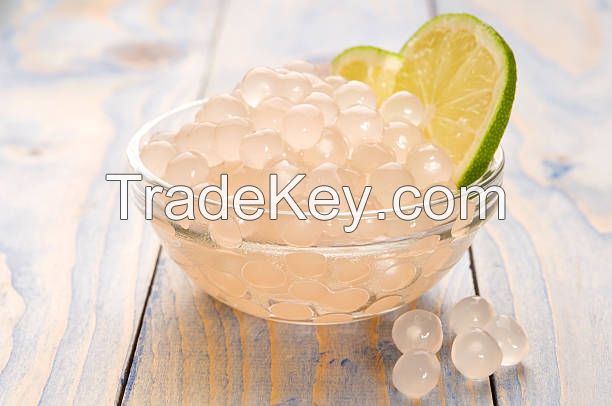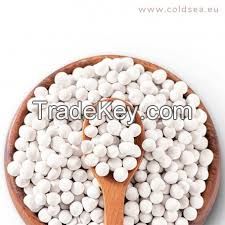





离岸价格
获取最新报价1.3 ~ 1.5 / Kilogram ( Negotiable )
|1000 Kilogram Minimum Order
Tapioca pearls, those chewy, translucent spheres that add a unique texture and flavor to various dishes, have gained immense popularity worldwide. Made from cassava starch, these pearls are a versatile ingredient used in a variety of cuisines, from Asian street food to modern fusion dishes. This comprehensive guide will delve into the world of tapioca pearls, exploring their history, production process, nutritional value, and culinary applications.
The origins of tapioca pearls can be traced back to Southeast Asia, where cassava root, the primary ingredient, has been cultivated for centuries. The ability to extract starch from cassava and form it into pearls likely arose as a way to preserve the starchy component of the root. Over time, tapioca pearls became a staple ingredient in many Asian cuisines, particularly in dishes like bubble tea and desserts.
Cassava Root Preparation: The cassava roots are harvested, peeled, and washed to remove impurities. They are then grated or crushed to extract the starchy pulp.
Starch Extraction: The starchy pulp is mixed with water and allowed to settle. The starch separates from the liquid and can be collected.
Pearl Formation: The extracted starch is mixed with water and kneaded into a dough. This dough is then forced through a sieve or nozzle to form small spheres, which are known as tapioca pearls.
Cooking and Cooling: The tapioca pearls are cooked in boiling water until they become translucent and chewy. They are then rinsed with cold water to prevent sticking and stored in a refrigerator until ready to use.
While the most common type of tapioca pearls is white, they can also be found in various colors, such as black, brown, and rainbow. These different colors are achieved by adding natural or artificial food coloring to the starch during the production process.
Tapioca pearls are primarily composed of carbohydrates, providing a good source of energy. They are low in fat, cholesterol, and sodium, making them a healthier option compared to many other starchy foods. However, it's important to note that tapioca pearls are also high in calories, so they should be consumed in moderation as part of a balanced diet.
Tapioca pearls are incredibly versatile and can be used in a wide range of dishes. Here are some popular culinary applications:
Uncooked tapioca pearls can be stored in a cool, dry place for several months. Once cooked, they should be stored in a refrigerator in an airtight container for up to a week.
Tapioca pearls are a delightful and versatile ingredient that has gained popularity worldwide. Their chewy texture, neutral flavor, and nutritional value make them a valuable addition to a variety of dishes. Whether you're enjoying a classic bubble tea or experimenting with new culinary creations, tapioca pearls offer a unique and satisfying experience.
| 国家: | Vietnam |
| 型号: | Tracy tapioca pearl white - +84 394935719 - H583 |
| 离岸价格: | 1.3 ~ 1.5 / Kilogram ( Negotiable ) 获取最新报价 |
| 位置: | Vietnam |
| 最小订单价格: | 1.3 per Kilogram |
| 最小订单: | 1000 Kilogram |
| 包装细节: | customer's request |
| 交货时间: | 15 to 20 days |
| 供应能力: | 100000 Kilogram per Day |
| 付款方式: | T/T, L/C, Western Union |
| 產品組 : | starch |




